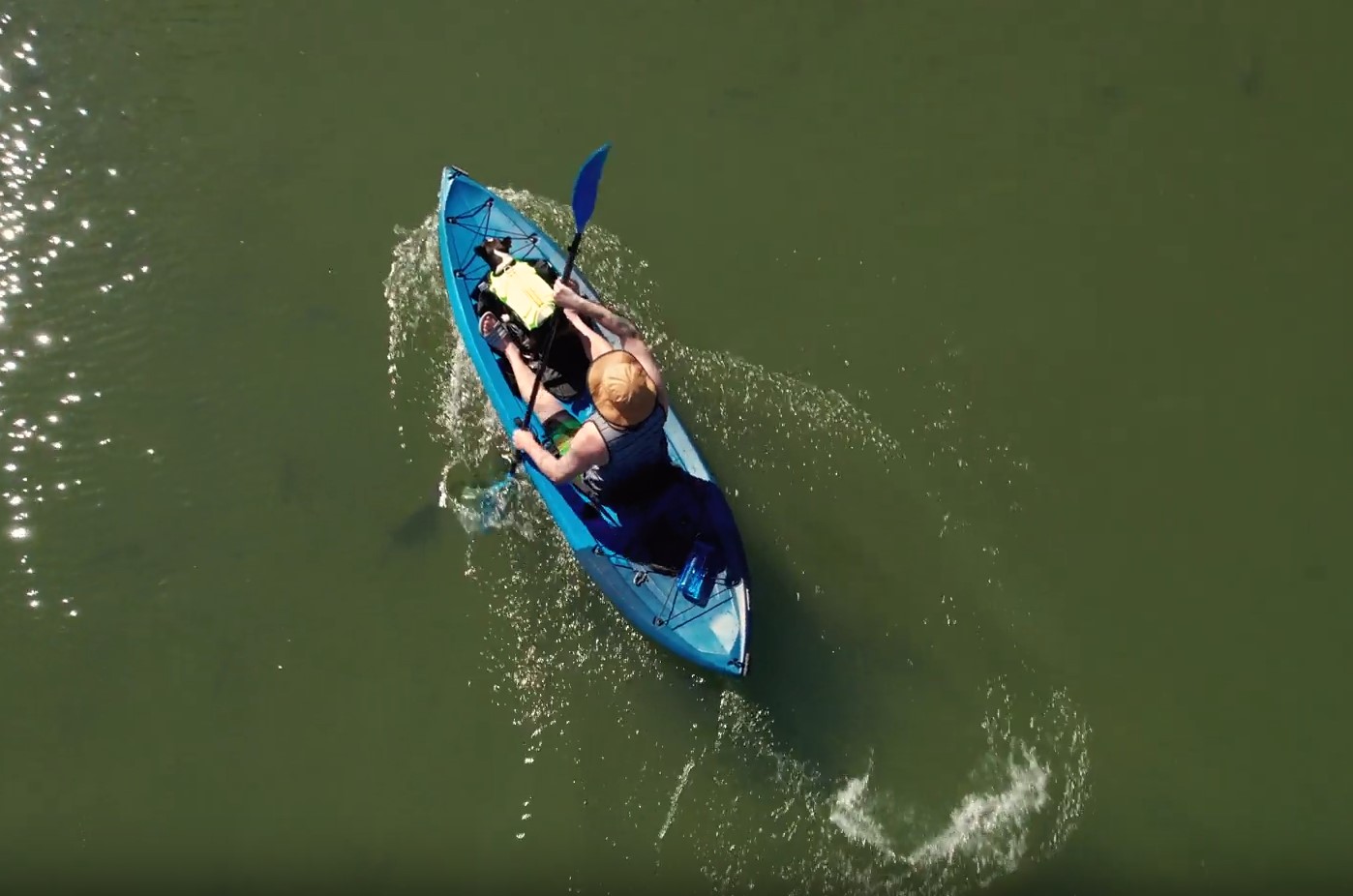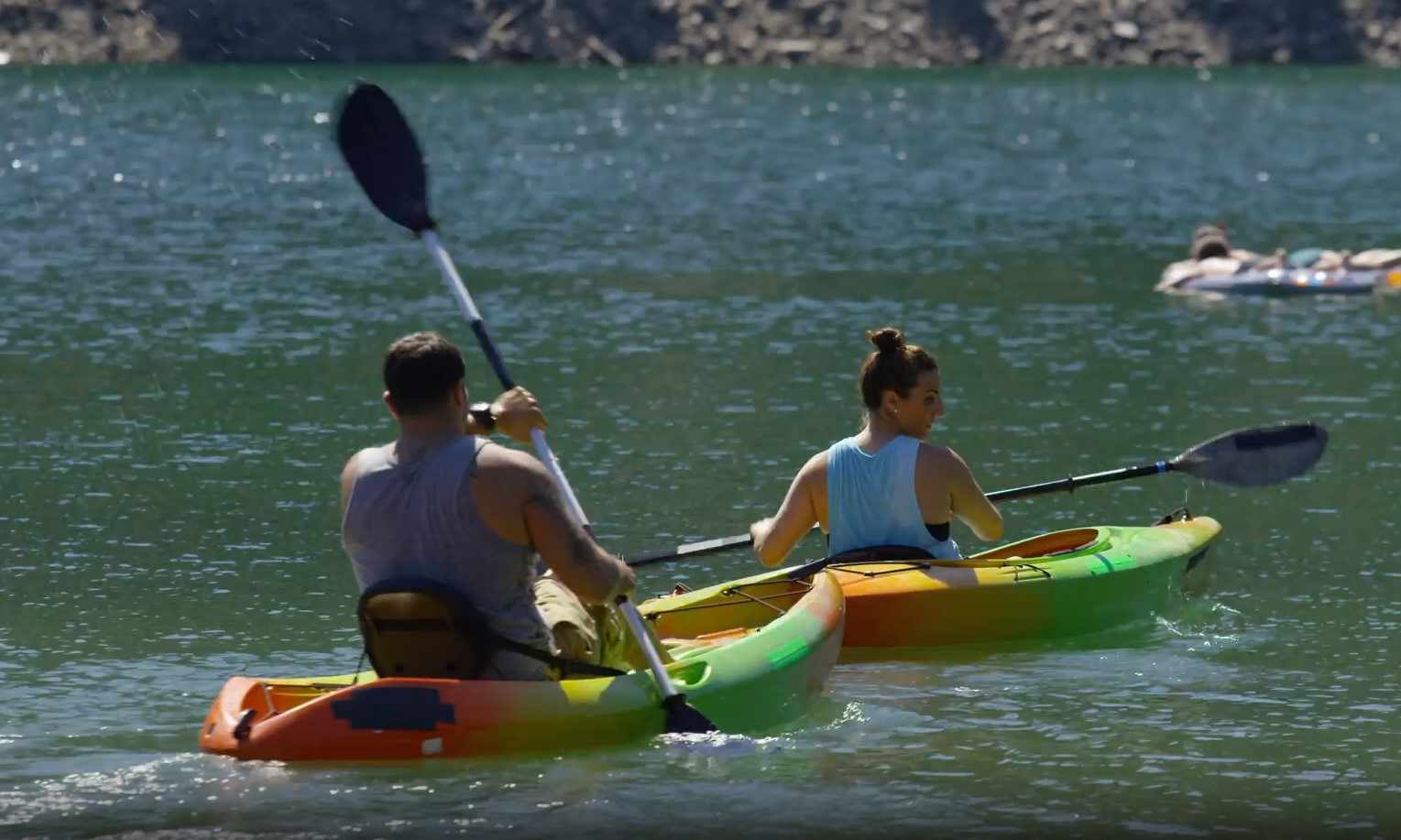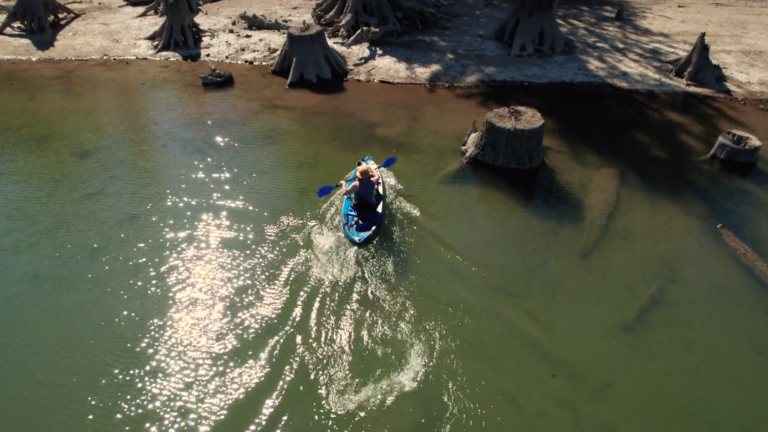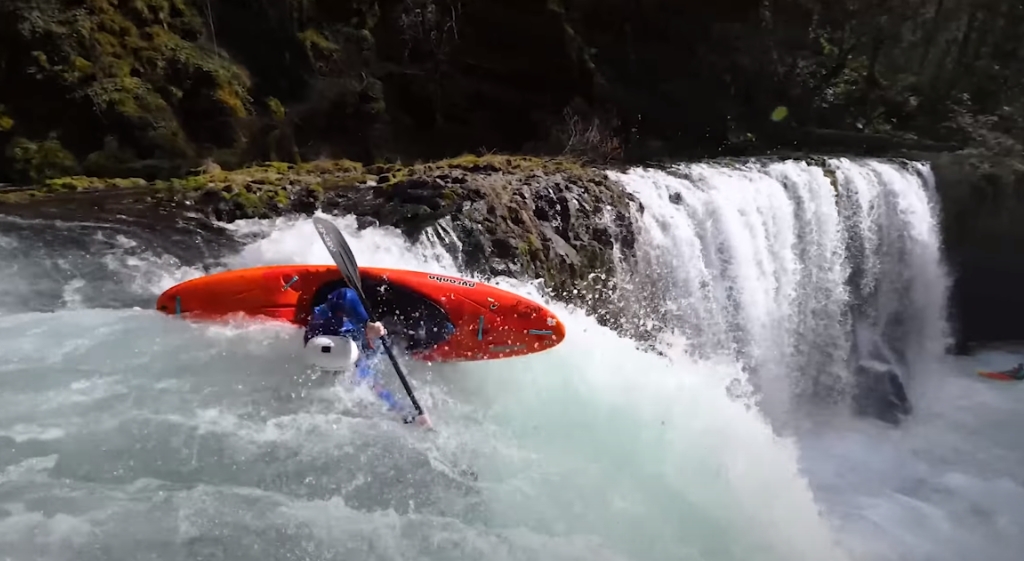If there’s one thing I’ve learned after all of these years of experience, it’s that kayaking is more than just a sport; it’s a way to find a bit of adventure and peace, all rolled into one.
I still remember my first time in a kayak; it was more of a zigzagging, water-splashing affair than the smooth sailing I had imagined. But that’s the beauty of it – every misstep in the water taught me something new.
This guide is a collection of all those lessons and a few tricks I’ve picked up along the way. Whether you’re just starting to dip your paddles in the water or you’ve been at it for years, I hope my experiences can help you navigate these waters a bit more smoothly.
Table of Contents
ToggleThe Basics of Paddle Strokes
Forward Stroke
The forward stroke is the fundamental technique in kayaking, used primarily to propel the kayak forward. To execute it effectively, you must focus on using your torso rather than just your arms.
This involves a coordinated effort where the paddle enters the water near the kayak’s front and is pushed through the water in a straight line parallel to the kayak, finishing near the hip. The key here is to maintain a rhythm and ensure that each stroke is as efficient as possible, minimizing wasted energy.
Reverse Stroke
The reverse stroke, as the name suggests, is used to move the kayak backward. It is the exact opposite of the forward stroke, involving pushing the paddle forward from the hip towards the bow.
This stroke is crucial for maneuvering in tight spaces or when you need to quickly stop or slow down. It requires a good sense of balance and control, as moving backward can feel less intuitive and stable than moving forward.
Sweep Stroke
The sweep stroke is all about turning the kayak. It’s a wider, more sweeping motion compared to the forward and reverse strokes. When you need to turn your kayak, you extend the paddle out to the side and sweep it in a broad arc. The wider the arc, the sharper your turn will be.
This stroke is essential for navigating turns in rivers or changing direction quickly to avoid obstacles.
Advanced Turning and Maneuvering

Turning and maneuvering a kayak requires a blend of several techniques. The bow rudder and stern rudder are advanced turning techniques that offer more control and precision.
The bow rudder involves placing the paddle near the kayak’s bow to pivot and turn, while the stern rudder uses the paddle at the stern as a steering mechanism. Both require practice to master but offer excellent control once learned.
Edging is another critical skill for efficient turning. It involves leaning the kayak on its side to reduce the waterline length, allowing for sharper and quicker turns. This technique is particularly useful in rough waters or when quick directional changes are necessary.
Bracing for Stability
Maintaining stability in a kayak is vital, especially in challenging conditions. The low brace and high brace are techniques used to prevent capsizing.
In the low brace, you use the flat part of the paddle blade against the water’s surface for support if you feel unstable.
The high brace is similar but involves a more aggressive motion, using the upper side of the blade for support.
Sculling for support is an advanced technique providing continuous stability. It involves moving the paddle blade back and forth in the water, creating lift and support to keep the kayak upright. This technique is essential in rough waters where balance and stability are constantly challenged.
Additional Tricks and Skills

The Eskimo Roll
The Eskimo roll is a vital self-rescue technique that allows a kayaker to right themselves after capsizing without exiting the kayak. This technique is crucial for paddling in challenging conditions where the risk of capsizing is high.
It involves a series of coordinated movements including setup, snap, and recovery. Each step is crucial and requires significant practice to ensure a smooth and efficient roll.
Surfing and Playboating
Kayaking isn’t just about navigating calm waters; it also offers the thrill of surfing and playboating. River surfing involves riding standing waves in a river, which requires precise control, timing, and balance.
Playboating, on the other hand, is about performing various tricks in specially designed kayaks. These activities add an adrenaline-pumping dimension to kayaking, appealing to those who love a bit more adventure and challenge.
Enhancing Paddling Efficiency
Efficient paddling is key to reducing fatigue and covering longer distances. Paddle feathering, where the paddle blades are set at different angles, can reduce wind resistance and improve stroke efficiency.
Proper torso rotation, involving the use of core muscles instead of just the arms, results in more powerful strokes. Additionally, maintaining consistent pacing and taking regular breaks is important to avoid exhaustion and enjoy a longer time on the water.
Tips for a Better Kayaking Experience

Be Prepared for the Water!
Safety is paramount in kayaking. Always check the weather and water conditions before setting out. Being prepared for sudden changes in weather is crucial. Regularly inspect your kayak, paddle, and safety gear, and never forget to wear a life jacket, regardless of your swimming skills or experience.
Building Strength and Stamina
Kayaking is physically demanding, and building core strength and flexibility can significantly enhance your paddling technique and endurance. Engaging in specific exercises off the water can help you build the necessary muscle groups.
Regular kayaking itself is a great way to build strength, and practicing in different conditions helps refine techniques and build confidence.
Join a Kayaking Community
Joining a kayaking community can be immensely beneficial. It provides opportunities to learn from experienced paddlers, share tips, and make new friends. Participating in events like races, workshops, and group trips offers chances to challenge yourself, learn new skills, and experience different aspects of kayaking.
Here is a good instructional video for you to check out and find out more about kayak paddling techniques and tricks:
FAQs
How does kayak design influence paddling technique?
The design of a kayak significantly impacts paddling techniques. For instance, longer and narrower kayaks are typically faster and require a more efficient forward stroke, while wider kayaks offer greater stability and may require different bracing techniques. Understanding your kayak’s design helps in optimizing your paddling style for speed, stability, or maneuverability.
Can kayak paddling techniques vary based on water conditions?
Absolutely. Paddling techniques can vary greatly depending on water conditions. In calm waters, steady and rhythmic strokes are effective, while in rough or fast-moving waters, more aggressive bracing, and quick, responsive strokes are necessary. Adapting your paddling style to the water conditions is key for safe and efficient kayaking.
What are some common mistakes beginners make in kayak paddling?
Common mistakes made by beginners include over-reliance on arm strength instead of using torso rotation, incorrect paddle grip, and posture, and not properly aligning the kayak’s direction with their strokes. These mistakes can lead to inefficient paddling and increased fatigue.
How does one maintain balance in a kayak during challenging maneuvers?
Maintaining balance during challenging maneuvers involves a combination of proper posture, effective bracing techniques, and the ability to read water conditions. Keeping your center of gravity low and using your paddle as a support point through low and high braces can significantly aid in maintaining balance.
Are there specific techniques for paddling a kayak in windy conditions?
Paddling in windy conditions requires specific techniques such as adjusting the angle of your paddle (feathering) to minimize wind resistance, using more powerful and deliberate strokes, and positioning your kayak at an angle to the wind to reduce its impact. Staying low in the kayak and using edging can also help maintain control in windy conditions
The Bottom Line
Kayaking, for me, has always been about the simple joy of being on the water, paddle in hand, with a new view around every bend. It’s amazing how a bit of water and a piece of plastic can teach you so much about yourself and the world around you.
This guide is my way of sharing what I’ve learned – not just the techniques, but the little moments of joy, like the time I finally managed a perfect Eskimo roll after weeks of tumbling into the water.
So, here’s to more of those victorious moments for you! Grab your kayak, hit the water, and remember that every splash, every stroke, and every flip (intentional or not) is part of the adventure.
Adelaide Gentry, a seasoned kayaking enthusiast and expert, is the driving force behind KayakPaddling.net. With over a decade of experience navigating the world’s most challenging waterways, Adelaide combines her passion for adventure with a deep knowledge of kayaking to provide insightful and practical guidance for paddlers of all levels.
Related Posts:
- 16 Best Kayak For Beginners 2024 - Kayaking Adventure Gear
- Heavy Duty Fishing: 11 Best Rods And Reels For Big Fish 2024
- 12 Best Fishing Lures Ever 2024 - Baits That…
- 10 Best Saltwater Fishing Boats - Ultimate Angling Adventure
- 10 Best Kayaks For Camping 2024 - Lightweight and…
- 16 Best Kayak Fishing Paddles 2024 - Affordable Fishing Gear












